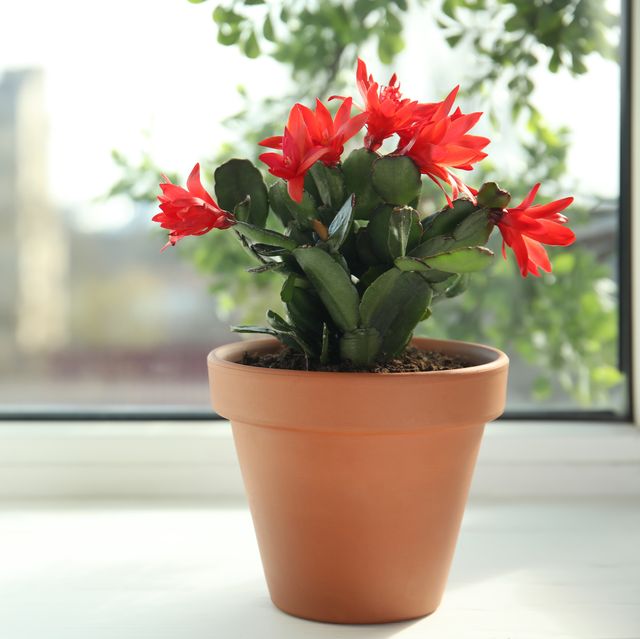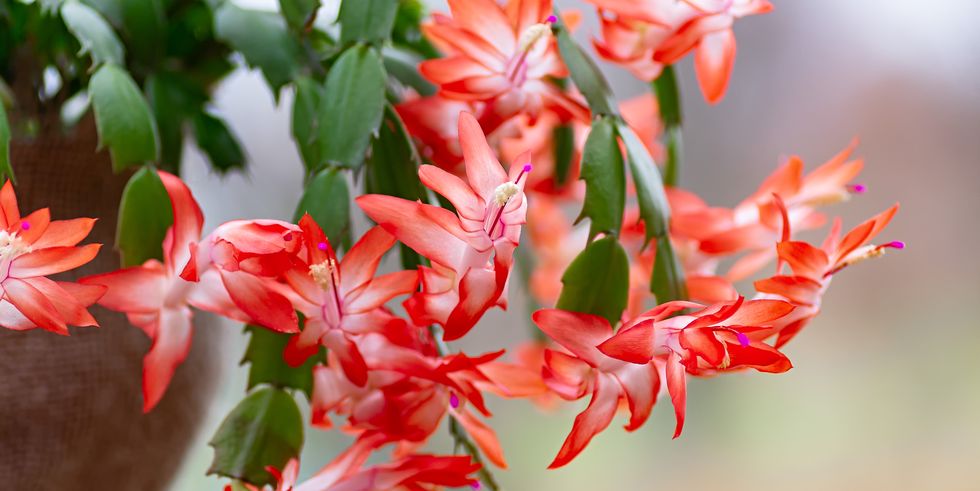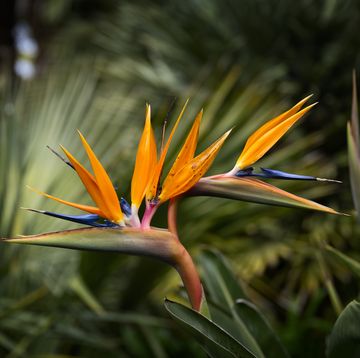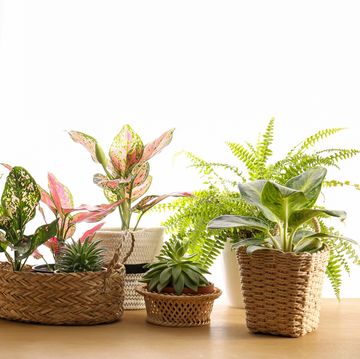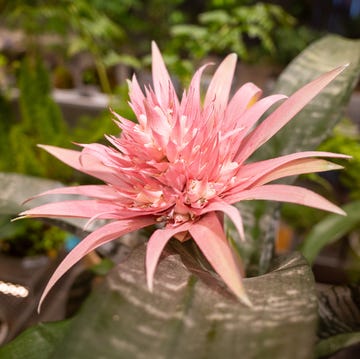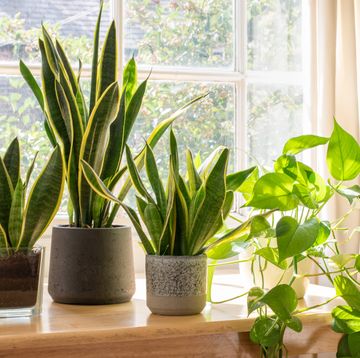Many plants are centered around Christmas, such as the poinsettia or the Christmas cactus, but are you familiar with the Thanksgiving cactus? Though fall does get some beautiful autumnal blooms, you wouldn't expect a tropical plant to be among them. However, the Thanksgiving cactus (Schlumbergera truncata) is native to Brazil, where it thrives among the orchids and shady tree branches in the rain forests. It's very similar to the Christmas cactus and the Easter cactus, which bloom around their eponymous holidays, and this one—you guessed it—blooms for the first time near the end of November, giving the plant its name.
The Thanksgiving cactus is different from your typical Southwestern cacti for a few reasons other than the environment in which it grows best. Rather than prickly spines and the traditional round body associated with that plant family, Thanksgiving cacti have flattened branches with pointed ends and sawlike teeth. Their blooms can be a variety of colors, including red, pink, white, and yellow. If you're interested in adding one of these unique succulents to your space, read on to learn more about Thanksgiving cacti care.
How to Care for a Thanksgiving Cactus
Thanksgiving cacti are true cacti, but they don't grow in the same environment as a traditional cactus. They're epiphytes, like orchids and air plants, meaning they grow on other plants but are not parasitic, and they make wonderful houseplants.
Sunlight
If you have a bright spot in your home that isn't in direct sunlight, you have the perfect place for a Thanksgiving cactus. Too much direct sunlight can cause the plant to turn yellow rather than its beautiful green, so keeping it by a north- or east-facing window or even a shady south- or west-facing window is ideal. In order for your plant to produce the best flowers, it shouldn't receive more than 12 hours of light. It needs the darkness for blooms to set.
Soil and Fertilizer
All holiday cacti require a bit more magnesium than other houseplants, so finding your Thanksgiving cactus a magnesium-rich fertilizer you can add to a well-draining soil is essential. The Home and Garden Information Center (HGIC) suggests supplementing its water with Epsom salts (try mixing in one teaspoon of Epsom salts per gallon of water) as well, but avoid doing so during the week you add the fertilizer, which you should do once a month. Stop adding fertilizer in the later summer months for better flower production in the fall.
Thanksgiving cacti need to live in a pot with a good number of drainage holes at the bottom since they won't thrive in a soggy soil. Consider adding peat moss or sand to the pot to prevent pooling water around the roots. Thanksgiving cacti are root-bound, so there's no need to repot them for about two to three years.
Water
The soil surrounding your Thanksgiving cactus should never be soaking wet or be bone dry. They're succulents, so they don't require a ton of attention with the watering can, but their soil should be consistently moist and never fully dry to the touch. Holiday cacti are prone to root rot, so standing water is your main enemy. During the hot months, they can stand to be slightly underwatered.
Temperature
Like most tropical plants, Thanksgiving cacti thrive in a humid, warm environment. However, the typical household temperature can keep a cactus very healthy too. During the summer months, the temperature shouldn't get above 90 degrees Fahrenheit, and ideally you should keep your cactus between 70 to 80 degrees in the day. In the fall leading up to the blooms, the temperature shouldn't ever drop below 50 degrees, but the daily temperature can range from a cooler 60 to 68 degrees. Lower temperatures leading up to the buds forming will produce better and more flowers.
Pruning
Pruning is an important task for plant lovers to keep any houseplant healthy, and Thanksgiving cacti are no different. To promote bud growth, cut the stems in the late spring or early summer, and make sure you have the right gardening tools for the job. Be sure to save the cut stems for propagation too!
How Do I Propagate a Thanksgiving Cactus?
If you want more of these tropical cacti around your house, maybe for a huge, flowering centerpiece for the holidays, use cut stems to produce more plants. HGIC suggests using stems with three to five phylloclades (or stem joints) on each to start. Set the segments aside for a day to dry out, then stick them about one inch deep into a pot with moist soil. Do this only in the spring and summer while the plant is actively growing, and avoid doing it in the winter once it has bloomed.
What If My Thanksgiving Cactus Isn't Blooming?
Thanksgiving cacti need a short period of cool, dark conditions for their flowers to bloom, so place them outside for periods of at least 12 hours at a time in the early fall. You'll need to do this for six weeks in order for the buds to appear. If it's still too warm or already too cool outside in your location, you can try placing the plants in a dark, temperature-controlled room to mimic the early fall climate. Once the buds develop, you can move the plants back to their normal places in your home.
